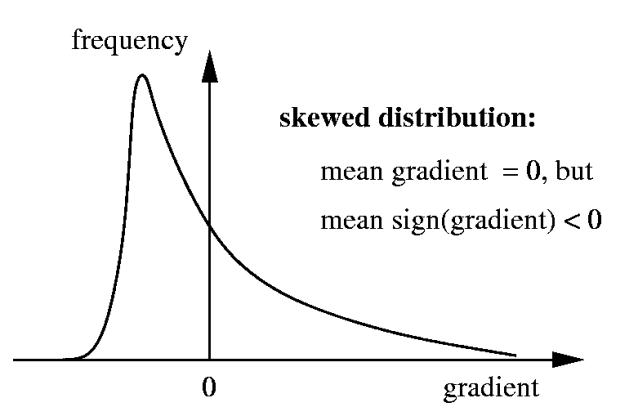
Skewed polls
The skewedness of polls and the unskewing of polls are among the things being chattered about by the chattering classes these days.
This skewed polls debate, such that a debate exists, centers on the premise that many if not most of the polling being released is far too favorable to Democrats. Specifically, the criticism is that the partisan ID cross tabs of the polls are not credible, that they should be something else.
So what is the correct partisan ID distribution for a poll to be at?
The answer to that question is that there is no correct partisan ID distribution for a poll to be at. This is not to say there is dispute about what the correct partisan ID number is, but rather that there is literally no number that is correct more than any other number.
This is because the partisan ID distribution of a poll is driven by the people responding to the poll, not by the pollster themselves.
To put it differently, partisan ID distribution, unlike gender, age and ethnicity, is not a characteristic of a population that you are looking to emulate in your sample. Instead, partisan ID is an aspect of a sample that you are seeking to measure.
A pollster does not go out looking for a certain partisan ID distribution, in the same way that a pollster does not go out looking for a certain candidate preference distribution. Instead, the partisan ID distribution finds the pollster.
The partisan ID variable is informed as a result of a polling experiment; it is not a variable to be controlled in that experiment.
All of these are just different ways of trying to explain what appears to be the key concept that is being lost by the poll unskewing proponents. If there appears to be an “over-sampling” of Democrats in all of the polling, it’s not because all the polls are skewed. It’s because more people are identifying as Democrats or less people are identifying as Republicans or a combination of both.
Now it’s certainly possible for a poll to go off the rails and there are a number of ways in which that can happen. But it’s exceedingly unlikely that all of the polls have gone off the rails and that they have all gone off the rails in the same direction.
Here’s what the four main internet polling aggregators show as of Saturday (things haven’t changed much in the meantime):
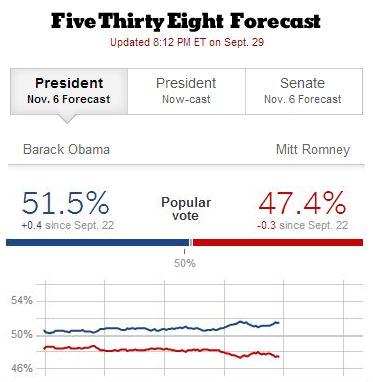
FiveThirtyEight election forcast (via fivethirtyeight.blogs.nytimes.com)
PollTracker polling average (via polltracker.talkingpointsmemo.com)
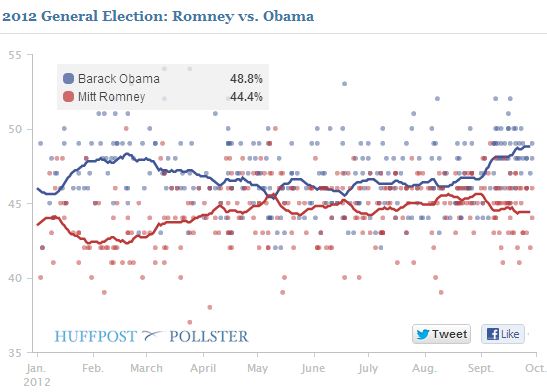
Pollster polling average (via elections.huffingtonpost.com)
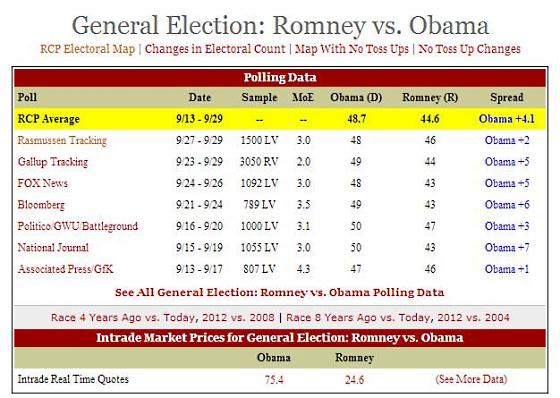
Real Clear Politics polling average (via www.realclearpolitics.com)
And here is what unskewed polls average shows.
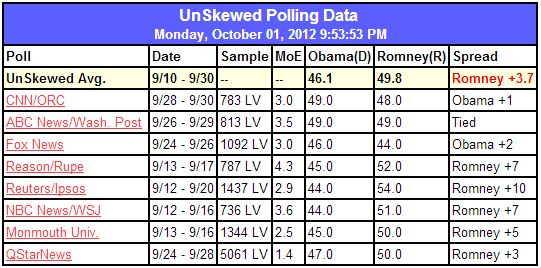
Supposedly “unskewed” polls (via unskewedpolls.com)
In light of these two different views of the polling data, this is a concept that should be considered:
Occam’s razor is the law of parsimony, economy, or succinctness. It is a principle stating that among competing hypotheses, the one which makes the fewest assumptions should be selected.
There are two competing hypotheses here.
One hypothesis, offered by the poll unskewers, is that all of the media doing polling and all of the polling firms and all of the third party vendors that the polling firms buy lists from, that all of these groups are conspiring to inflate President Obama’s standing in the polls. Even the Republican affiliated media and polling outlets (except Rasmussen of course) are in on this racket.
That is one hypothesis.
The other hypothesis, such that you even need another hypothesis, is that the above hypothesis is utter nonsense.
Thanks for your feedback. If we like what you have to say, it may appear in a future post of reader reactions.


